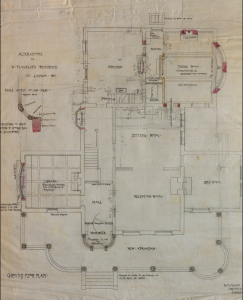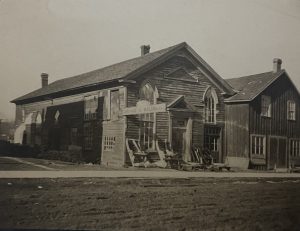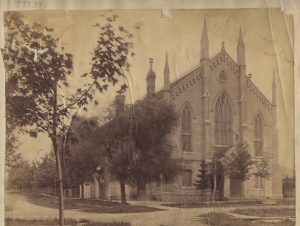Cambridge Street Methodist Church
Both William and J. D. were staunch Methodists throughout their lives. It was their uncle J. R. who was able to secure the mortgage in 1871 to construct the first phase of the Methodist Church on Cambridge Street in 1870. Throughout their personal and business lives, much of the decisions made were rooted in their Methodist teaching. William and J. D.’s Sunday schedule was as follows:
7:00 a.m. — prayer meeting
9:30 a.m. — Class of Disciples Meeting
10:30 a.m. — morning service
2:30 p.m. — Sunday School
6:30 p.m. — evening service, often followed by prayer service
Taught delayed gratification, William and J. D. never took for granted their short term success. They looked to the future and what would be beneficial to themselves, their employees and Lindsay; a town that they loved. They built their business on the principles of what would bring wealth and prosperity to their customers. It gave the brothers personal success but for their time in the community, it was amply repaid.

Drawing by Toronto architect, George Miller, that shows the alterations of the Colborne Street house. 1897.
After William moved his family from his Peel Street home to a much larger Gothic and Classical Revival house on Colborne Street in 1896, an extensive renovation had to occur. When the house was first built by Thomas Keenan in 1864, it was his hope that it would become the rectory for the Catholic Church and as such was designed in the shape of a cross. Due to his devout Methodism, he built an addition to remove the cross shape. This was achieved by adding a verandah that ran along the front and east side of the home.
All three Flavelle brothers would be large benefactors to the Methodist Church in Lindsay. In December of 1912, the brothers donated over $5,812 to the Church for the purchasing of a Casavant organ out of Ste. Hyacinthe, Quebec. In his speech on December 4, 1912 in front of the congregation, J. D. dedicated the organ to his mother and stated near the end of his speech that his family would be “amply repaid” if worshippers “either now or in the years that are to follow” derived “pleasure or profit” from the organ.
After J. D. passed away in 1925, many in Lindsay could reminisce about his charitable giving to men and women who found themselves struggling and in unfortunate circumstances. William and J. D. lived by their faith and made their community better because of it.



